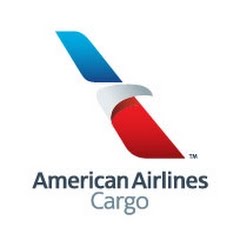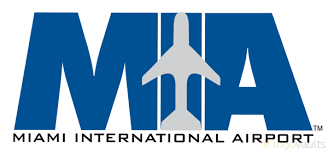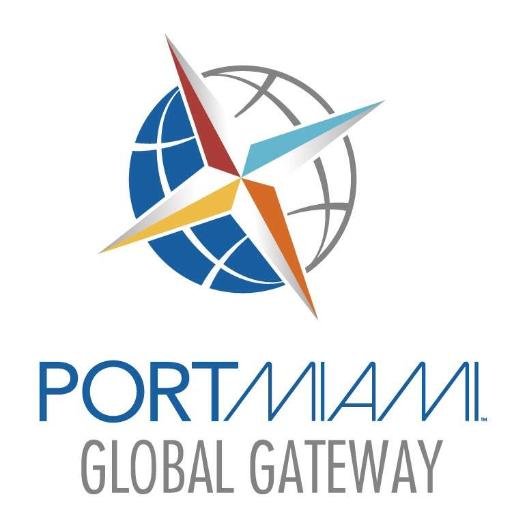1st Glimpse at 2016 Trade Data, and What it Means for 2017
Subscribe to WorldCityTV on YouTube for the latest interviews and event announcements
Become a Trade Connections Member today. Click here for more info.
U.S. trade fell in 2016 for a second consecutive year, begging the question of what it means for 2017. WorldCity President Ken Roberts revealed some of the trade data Friday morning at the Hyatt Coral Gables, with a panel of experts and room full of trade professionals parsing that data for what to expect moving forward.
Here are some of the statistics Roberts noted from the first glimpse into WorldCity’s 2017 annual data release:
- Four countries did set trade records with the United States last year (chief trade with U.S. in parentheses) – India (diamonds), Italy (pharmaceuticals), Switzerland (gold), and Ireland (pharmaceuticals)
- U.S. trade with China and Mexico went down in 2016
- South Florida customs district is ranked #12 but trade went down for 4th consecutive year
- South Florida customs district’s dominant players are MIA airport, Port Everglades, and PortMiami
- MIA trade did increase 8.87% in 2016, thanks to gold trade through the airport, as well as being a top importer of plasma/bio chemicals from Italy
- PortMiami’s trade decreased 5.23% last year
- Port Everglades trade was down 12.16%, mostly because of the price of oil and gas
- Only one customs district in the top-15, El Paso, Texas, set a record in 2016
- Cleveland, Ohio almost set a record thanks to trade with China through its airport
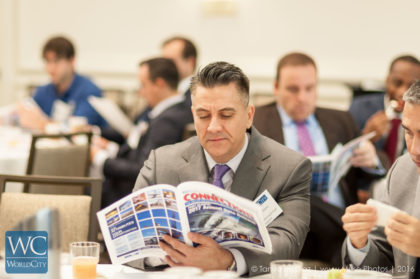
A Trade Connections member reads the program from the 2017 Annual Data Release. Become a member today!
So where will we be a year from now? That was the question posed to panelists Romaine Seguin, President of UPS Americas Region, and Dr. Jerry Harr, a professor, researcher, and consultant in strategic planning, international management, and marketing at FIU.
“Trade has got to happen between Mexico and the United States,” said Seguin, who noted UPS’s numbers for January 2017 were not very good despite strong manufacturing numbers coming out of Mexico to start the year, perhaps to get ahead of potential border issues with the new U.S. administration. “I think we are going to have a good 2017. I am optimistic.”
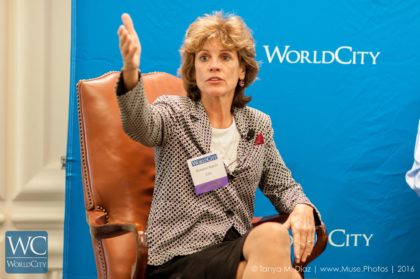
Romaine Seguin, President of UPS Americas Region, served as a panelist at Trade Connections.
Dr. Harr observed 2016 was not a good year for the Americas region but sees the business cycle bottoming out with indications of small growth around 1.5% for 2017. Drilling down into that number reveals which countries should grow the most in the region: Panama (6.4%), Dominican Republic (4.5%) Colombia (3.0%).
“Those would be the top-3, but coming up really fast on Colombia, this is a horse race, is Argentina,” said Dr. Harr, assuming the political climate there allows for free markets to be embraced. “I think we’ll see an increase of foreign investment there.”
However, the two nations in the region in the worst shape moving deeper into 2017 are Venezuela and Ecuador, with both expected to see declines of more than 4%. For Venezuela, it’s about supply shortage and inflation, with companies, including UPS over the past 4-5 years (as noted by Seguin), ramping down business in that country. For Ecuador, the long-term prospects are much more promising than Venezuela but likely not for 2017.
What is driving growth in Panama?
Public works expansion and financial sector reform are big factors in the 6.4% expected growth for Panama in 2017. Dr. Harr noted Panama is also making plays to become a convention site, using the example of a pharmaceutical company wanting to have a conference in Miami but could potentially run into visa problems for business reps from Middle Eastern countries with the new administration. Why not just have the convention in Panama?
“Panama has everything going for it. Panama is not trying to be anything other than what it is,” said Dr. Harr. “It’s trying to be first-rate nation in services and trade shipment centers.”
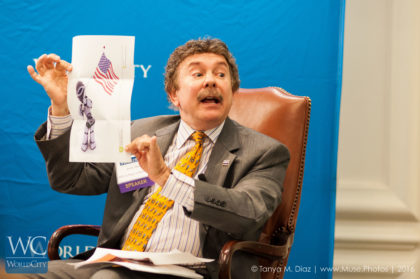
Panelist Dr. Jerry Harr shows a humorous picture of a robot worker waving an American flag.
Seguin even noted how impressed she was by Panama at the amateur golf championship held in that nation, sponsored by The Masters and USGA. More importantly though, the Panama Canal continues to be vastly valuable to a logistics powerhouse like UPS.
“It gives shorter days in the supply chain,” said Seguin, explaining how that is critical to cost for UPS’s clients. For example, the canal cut four to six days out of trips to New York City. “That’s huge financially. It’s another means of controlling your supply chain.”
The facts and reality about U.S. trade
Easily the most energetic answer of the discussion came from a question from Swiss logistics company M+R Spedag Group and its Americas Vice President Stephan Bucher, who asked about the potential isolationist push within the United States for more “Made in America” products and jobs and highly motivated Chinese investors who may be scared off from trade with the U.S. due to more potential isolationist policies.

M+R Spedag Group and its Americas Vice President Stephan Bucher
The question sparked a conversation about how trade now has a bad connotation in the United States after election cycle rhetoric from Donald Trump and Bernie Sanders.
“I, for one, am sick and tired, both as a professor and business consultant, (of hearing) that we don’t make things anymore. That’s BS,” said Dr. Harr. “We are leading the world in advanced manufacturing, robotics, and biotechnology. I’m doing work with innovation in biotechnology. From Pensacola on the panhandle to Philadelphia to Silicon Valley, you name it. We are more competitive in manufacturing now than we have ever been. That’s the good news. The bad news is the fact that this is done through automation.”
And if you want to believe political candidates who say they will restore those old obsolete manufacturing jobs, Dr. Harr says he’s got a bridge to sell you too.
“These American jobs…they’re not coming back. That’s nonsense. If anybody tells you that, they’re smoking weed,” said Dr. Harr, as the room burst into laughter. “You know where we’re losing our jobs and employment? Robots, ladies and gentlemen! Robots. 88% of the jobs lost since NAFTA in the United States are due to technology. So, it’s not a Mexican worker, who is taking the job from America.”
But those statistics are not what you’ll hear on the evening news or campaign trail, and it’s not what millions of middle class workers in the United States believe who have seen their wages go down, leading the a knowledge gap when it comes to the benefits of trade.
Seguin said there’s no stopping those developments in automation. She believes her eight-year-old niece will never drive a car because of automation. UPS is using drones already to deliver humanitarian aid in Rwanda, but she notes some jobs are still better with the human touch. So ultimately, the trade community must get the message out there more effectively to explain why the benefits outweigh the drawbacks for the working class.
Dr. Harr noted outside big urban areas since 2011, manufacturing employment has increased 33%. The job growth is for people with more than a high school diploma but less than a four-year degree. The apparel and textile industry has a $320 million surplus on imports from Mexico. State economic development agencies in North Carolina worked with the private sector to retrain workers in new companies, like the furniture industry, and those companies found it made more sense logistically to keep the jobs in America than China. 67% of the Ford Taurus is made in America, even though it is assembled in Mexico. U.S. services exports has a $300 billion surplus, including the export of education services.
These are the stories in trade nobody is talking about.
“How did we get the message wrong? We’re not getting the message right,” said Seguin. “Trade is healthy, in particular for women and children. Informal trade gets these countries nowhere. Get the right message out there. We’re not taking jobs away. We’re creating wealth. When wealth is around the world, everyone benefits.”
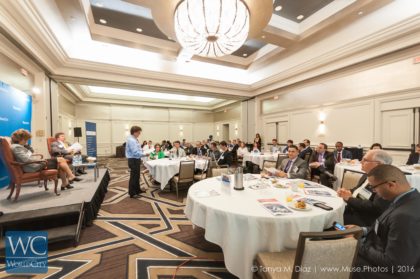
Trade Connections 2017 Annual Data Release
Today’s worker must continue education
To the American workers that believe they lost their jobs to another worker outside the country, Dr. Harr not only pointed to the statistics that dispute that but also provided sound advice and perhaps a solution to the problems of workers getting lost in the technological shuffle.
“Mr. blue-collar worker in a machine shop, you haven’t had school since you graduated high school. We’re in the 21st century. Would you want to be cut open by a cardiovascular surgeon that hasn’t had a course since he graduated medical school 20 years ago? I sure wouldn’t,” Harr said passionately. “Continuing professional education, keeping at the top of your game, is not a choice. It’s a necessity.”
“And there’s so much technology out there to find (professional education),” added Seguin.
Dr. Harr also stressed for those initially entering higher education in hopes of better job placement to find out what the projected demand is in that field before wasting time and money on a degree that may not bear fruit.
Thanks to our sponsors:
